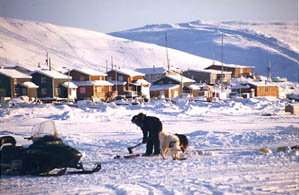Table of Contents
*
F.I.D.O.: Barry Salovaara and Tina Portman
*
Barry of the Midnight Sun
*
The Fan Hitch Contributor Wins Maxwell Award
*
Ivakkak: Encouraging Purity in Nunavik ISDs
*
Games People Play:
Saving the Sled Dog or Saving the Show Dog
*
Coppinger Comments Prompts ISDI Rebuttal
*
News Briefs
*
Media Watch
*
Behaviour Notebook: Building a Team
*
IMHO: The Sernix, a Fable
Navigating This
Site
Index of articles by subject
Index
of back issues by volume number
Search The
Fan Hitch
Articles
to download and print
Ordering
Ken MacRury's Thesis
Our
comprehensive list of resources
Talk
to The
Fan Hitch
The Fan
Hitch home page
ISDI
home page
Editor: Sue Hamilton
Webmaster: Mark Hamilton
Contents of The Fan Hitch Website and its publications are protected by international copyright laws. No photo, drawing or text may be reproduced in any form without written consent. Webmasters please note: written consent is necessary before linking this site to yours! Please forward requests to Sue Hamilton, 55 Town Line Rd., Harwinton, Connecticut 06791, USA or mail@thefanhitch.org

Hamilton
photo
Six-year-old dog team issue back on the City of Iqaluit docket
The January 9, 2004 edition of the Nunatsiaq News reported that the unresolved issue of where to picket Iqaluit's dog teams is once again up for discussion in the city's council meetings.
The debate began six years ago in March after a six-year-old child went out onto the sea ice and was killed by a team of dogs tethered there. A committee formed at that time has yet to settle the issue as to where dog teams should be kept. One suggestion offered by the coroner and supported by parents, was to tether teams at least 500 meters outside the city limits. The Iqaluit Dog Team Association and other complainants opposed this on the grounds that to banish the dogs that far away would do nothing to improve socialization with humans, and also that traditional culture would be harmed.
In the news report, Councillor Chris Wilson, who according to ISDI sources owns (or at least did own) Inuit Sled Dogs, was optimistic that given the current make-up of the council, there would be a better chance for a compromise somewhere between keeping the dogs in residential areas, as some now are, and banishing them to far outside the city limits. Apparently Wilson's proposal addresses only where dogs should be kept and not how.
In a January 19, 2004 letter to Councillor Wilson, the ISDI mentioned that the issue has been followed all these years by our organization and that we wished to show our support for what would serve in the best interests of preserving the breed in the Arctic. Wilson was asked if he would be willing to serve as a liaison to The Fan Hitch in order to provide first hand and accurate information on this and other issues that face the Inuit dog. Wilson was also asked if there had been discussion regarding the responsibility of children and accountability of adults relative to youngsters staying out of potential harm's way and or the harassing of picketed dogs; if parents were held accountable for the actions of their children; and what programs currently exist to educate children about their conduct around dogs.
Wilson has not responded to either of two requests for
further details
on this issue.
ISDI Donates Inuit Dog Thesis to Nunavut Library Services
The Inuit Sled Dog International is donating twenty-eight copies of Ken MacRury's thesis, The Inuit Dog: Its Provenance, Environment and History, to Nunavut libraries. The thesis will be distributed to the community libraries existing in eleven Nunavut hamlets. The remaining copies will be maintained at the central library headquarters in Iqaluit and will be available to Nunavut's remaining seventeen communities through the borrower-by-mail program.
The ISDI hopes that by making The Inuit Dog: Its
Provenance, Environment
and History widely available throughout Nunavut,
more Inuit will get
to know about the dog of their ancestors, and perhaps will
be encouraged
to develop and maintain teams of pure Inuit Dogs of their
own.
ISDI Working With Canine DNA Researcher
The ISDI is continuing its support of Swedish DNA researcher Dr. Peter Savolainen by arranging for him to receive additional samples for testing. Hair from about three dozen dogs were sampled back in 1999. Additional mitochondrial DNA samples have been sent since then and more are expected to be collected from Inuit Dogs in Iqaluit as well as those who will be in Pond Inlet, Nunavut in April for the seventh running of the Nunavut Quest.
Dr. Savolainen has offered the following information: "The samples you sent have been analyzed. That is, we have determined the DNA type. However, we have not yet compared these DNA types to those of other dogs, since we are waiting for DNA data from another lab in China. We should be able to assemble all data and begin the comparative data analysis this spring. Looking at the studies we have done so far, the picture of North American dogs (ISD, Alaskan malamute, Greenland dog, Inuit dog) is that they have mtDNA types of Asian origin, mostly differing from those of European breeds, and that they originate from relatively few dogs."
While the focus of Dr. Savolainen's research is the origin of the domestic dog, it is hoped that, as is sometimes the case with scientific research, an unexpected benefit to our particular breed will be found, such as the ability to identify inherited diseases or to differentiate between pure and contaminated dogs. But even without that possibility, the ISDI is pleased to be of assistance in the quest for some very basic information about the origins of domestication by providing Inuit Sled Dog DNA as well as identifying sources DNA from other primitive and sled dog breeds.